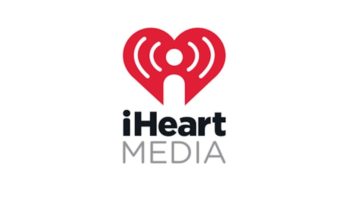The Radio Advertising Bureau said Friday that U.S. commercial radio revenue fell 9% in the third quarter compared to a year ago and is off 7% for the first nine months of the year.
It estimated our industry’s total revenue for the first three quarters of 2008 to be $14.8 billion.
Those data include off-air revenue, which continues to be a moderately bright but smaller spot compared to traditional on-air revenue.
Analyst Jim Boyle of CL King & Associates put it bluntly in the headline of his Monday analysis: “The last time radio had a yearly drop this deep, this discouraging, ‘The Long Ranger’ had its last new radio episode and Eisenhower was president.”
He said radio is headed for its worst year since 1954. “This trend is, unfortunately, not surprising given the economy and major advertisers’ struggles.” He noted the “continuous string of almost uninterrupted high-single-digit to double-digit declines” in RAB monthly numbers since March.
“When one looks for historical context, the 7% decrease in 2001 crops up, but that was up against a very daunting positive 12% mathematical comparison from 2000,” Boyle wrote. “One actually has to go all the way back to 1954, when radio ad revenue was down 9% against the prior year’s dip of 2%. 1954 was the fourth straight year of substantial radio advertising underperformance vs. total domestic ad revenue. … It was three years before radio revived its advertising growth to be comparable or better than total domestic ad revenue growth.”
He also said this October was radio’s 18th consecutive negative year-over-year revenue month and 2008 is the eighth straight struggling year. “If the recession lasts for all of 2009 and the weakness persists in many of the major radio ad categories, such as auto, to a point where spending severely plunges, then it may be 2010 or beyond before radio revives.”
Small-market radio “trounced” big-market radio in 19 of the 20 months, according to CL King’s own numbers, which found that the average small radio market has grown revenue by 0.6% per month during that period while the average big radio market has seen revenue off by 4% per month.
“Ironically, a few large radio groups have been or are selling off their relatively smaller-market stations to rationalize their giant platforms, which might be a plus for all involved,” Boyle commented in his report to clients and media.
The RAB found at least something to like in its latest numbers. “In the midst of this challenging economic climate, the financial picture for radio had some bright spots,” the sales organization reported. “Most notably, radio operators’ strategic efforts to offset cutbacks in traditional advertising have paid dividends as off-air continues its steady growth with increases from online and experiential marketing.” Off-air revenue was up 5% in the quarter and 9% for the year to date.
RAB also noted that “preliminary Q3 reports indicate widespread year-to-year declines across media,” not just radio.












